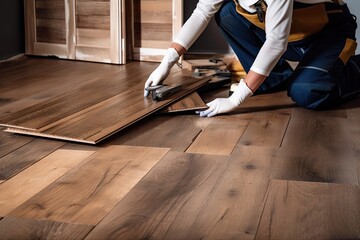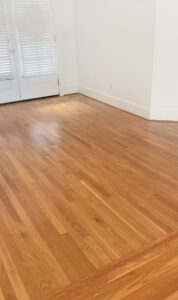Hardwood floors add beauty, durability, and value to any home. Hardwood flooring is healthier for the air in your home since it doesn’t trap allergens as carpet does. They’re also the best choice for people with allergies.

Authenticity is a quality that many homeowners desire. It is a feature that sets hardwood flooring apart from other types of flooring. Many people like the authenticity of solid wood floors because they can be sanded and refinished several times. This is an important feature because it helps ensure the floors last long.
The authenticity of hardwood floors also makes them a good investment for your home. They add value to your property and may help you sell it faster. Aside from that, they are also healthy and eco-friendly. This is because they are easy to clean and minimize dust, mold, and animal dander accumulation. This is great for your family, especially children and adults with allergies.
Wood floors are a great way to add aesthetic appeal and warmth to your home. They also increase the value of your home, which is a big plus for any homeowner or renter. Hardwood flooring comes in various colors and designs, allowing you to choose the perfect style for your space. The species and grade of hardwood you select also affect the aesthetic look of your floors.
Birch: A light-colored, natural grain hardwood that always stays in style, birch is a popular choice for homeowners looking to add timeless beauty to their homes. It complements many design styles, including traditional, contemporary, and shabby chic.
Red oak: A warm brown color that pairs well with various decor styles, red oak is one of the most popular hardwoods available today. It ranks 1290 on the Janka scale, making it an excellent choice for most areas of your home.
Hardwood flooring is one of the most durable options available for residential floors. Its durability comes from various factors, including wood species, color, grain pattern, and manufacturing type.
Choosing hardwoods with a high Janka hardness rating is a good way to ensure they will resist dents and dings. These ratings are determined by a test requiring a pound-force to push a steel ball halfway into the wood until its diameter is embedded.
Durability also depends on the finish that is applied to the wood. A sheen can help conceal scratches and abrasions, while darker colors minimize the visibility of these blemishes.
Hardwood flooring is a highly durable and long-lasting flooring that adds warmth, character and style to your home. It can also increase the resale value of your property.
Depending on your budget, you can choose from various woods. Common hardwoods like oak, maple and ash start at $4 to $8 per square foot, while more unique species command higher prices.
Another low-cost option is engineered flooring, which is a thin layer of solid wood bonded to a plywood or medium-density fiberboard (MDF) substrate. It’s a good choice for installation below grade or on a concrete slab, and it offers superior durability and moisture resistance.
Hardwood flooring is one of the easiest types of floors to maintain. It only needs regular sweeping or dust-mopping to keep it clean and beautiful.
It’s also easy to repair minor damage. You can apply a finishing putty in blending colors to help even scratches and wear.
Another advantage of hardwood is its very durable and resistant to heat, cold, and other environmental stresses. It’s a great choice for many areas of your home.
It can withstand heavy traffic. It’s also scratch-resistant and won’t get dented as easily as softer flooring materials. Its dense construction also means it doesn’t warp or swell with humidity and temperature changes like softer woods do.
Hardwood flooring is available in various species, each with its own unique grain pattern and color variations. Popular hardwood flooring species include oak, maple, cherry, and walnut. The planks of hardwood flooring can be pre-finished or unfinished, and they can be stained or left natural.
Hardwood flooring installation involves nailing or gluing the planks to a subfloor or over an existing floor. The installation requires high skill and attention to detail to ensure a level and secure floor.
Proper maintenance of hardwood flooring is important to maintain its beauty and durability. This includes regular cleaning, refinishing, and repairs as needed. Hardwood flooring can be refinished multiple times throughout life, making it a long-lasting and sustainable option.
